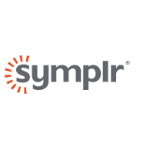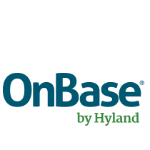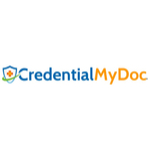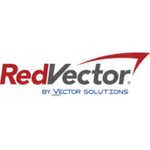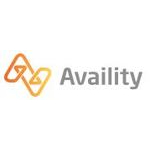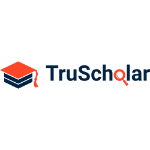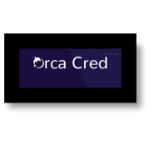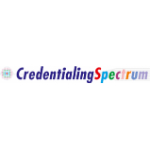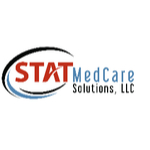TechnologyCounter provides genuine, unbiased real user reviews to help buyers make informed decisions. We may earn a referral fee when you purchase through our links, at no extra cost to you.
List of 15 Best Credentialing Software
Showing 1 - 15 of 21 productsCortex EDI is a platform that streamlines electronic data interchange for businesses of all sizes. It provides robust solutions for managing electronic transactions securely is a ly, while also reducing costs and increasing productivity. Trust Cortex...Read Cortex EDI Reviews
Symplr Payer is a software designed to streamline the payer process for healthcare organizations. With its advanced features and user-friendly interface, Symplr Payer offers a seamless solution for managing claims, payments, and reimbursements. Disco...Read symplr Payer Reviews
Expiration Reminder, is a solution to managing and tracking important dates and deadlines. Say goodbye to missed deadlines and oversights with our user-friendly software that ensures all expiration dates are easily monitored and managed. Simplify you...Read Expiration Reminder Reviews
Modio Health is a healthcare software company that revolutionizes how medical practices manage their patient data. With its user-friendly platform, healthcare providers can easily access, update, and analyze patient information in real-time, ultimate...Read Modio Health Reviews
OnBase ECM is a software solution that enables organizations to efficiently manage and streamline their content, processes, and data. With a user-friendly interface features, OnBase ECM helps businesses achieve greater efficiency and productivity, ma...Read OnBase ECM Reviews
CredentialMyDoc is a is a software designed to simplify document management processes for individuals and organizations. This innovative platform offers a user-friendly experience, streamlining tasks such as credential verification, document sharing,...Read CredentialMyDoc Reviews
Kareo is a and innovative healthcare technology company that offers a wide range of solutions for healthcare providers. With its user-friendly software and customizable features, Kareo aims to simplify and streamline daily tasks, improve patient care...Read Kareo Reviews
NetForum is a software solution designed to streamline and optimize your organizations operations. With its user-friendly interface features, NetForum simplifies tasks such as membership management, event planning, and fundraising, allowing you to fo...Read NetForum Reviews
RedVector is a leading software company that provides innovative online learning solutions to professionals in various industries. With a wide range of high-quality courses and training programs, RedVector aims to enhance skills, improve job performa...Read RedVector Reviews
Availity is a leading software platform that simplifies the healthcare industry by connecting providers, patients, and payers in one central hub. With Availity, healthcare professionals can streamline administrative tasks, improve communication, and...Read Availity Reviews
TruScholar, a powerful software created for students, is poised to revolutionize the way learning is approached. With its intuitive design features, TruScholar aims to enhance students academic journey by providing them with a dynamic tool for organi...Read TruScholar Reviews
Certifier is a software that takes the hassle out of verifying important documents and data. With its advanced technology and user-friendly interface, Certifier streamlines the certification process and ensures authenticity and security. Say goodbye...Read Certifier Reviews
OrcaCred is a solution for managing and tracking credentials with ease! Designed to streamline verification processes and ensure compliance, OrcaCred offers unmatched convenience for businesses and individuals alike. Say goodbye to tedious paperwork...Read OrcaCred Reviews
Credentialingspectrum is a software that revolutionizes the process of credentialing for healthcare professionals. It is designed to streamline and simplify the complex process of verifying credentials, allowing healthcare organizations to save time...Read Credentialingspectrum Reviews
STATCred the revolutionary software that simplifies your statistical analysis and reporting needs. With its user-friendly interface features, STATCred streamlines your data management process, making it efficient and hassle-free. Make data-driven dec...Read STATCred Reviews
- What Is Credentialing Software?
- Top Reasons Why Businesses Need Credentialing Software?
- What Are the Top Key Features of Credentialing Software?
- What Are the Top Benefits of Credentialing Software?
- What Are the Steps to Choose the Right Credentialing Software?
- What Are the Types of Credentialing Software for Different Industries?
- What Are the Technology Trends for Best Credentialing Software?
- What Are the Deployment Options for Credentialing Software?
What Is Credentialing Software?
Credentialing software refers to a specific category of software designed to securely store and authenticate an individual's credentials. The utilization of this system facilitates the management of personnel credentials, thereby ensuring that staff possess the necessary qualifications and certifications, including licenses, degrees, and certificates.
In addition to its primary function, the top credentialing software has the capability to effectively oversee and administer credentials for a diverse range of processes, including but not limited to background checks, security clearances, and financial qualifications.
Online credentialing software is employed for the purpose of storing and validating data pertaining to diverse entities, including hospitals, governmental bodies, and other institutions. The aforementioned data encompasses personal identifiers such as people' names, residential addresses, social security numbers, and other pertinent details.
The utilization of credentialing management software is likewise employed to ascertain if the requisite credentials adhere to the criteria set by the employing entity. The best credentialing software software aids in the verification of candidates' qualifications and certificates, hence assisting companies in the process of employing persons who possess the requisite credentials for the job.
Top Reasons Why Businesses Need Credentialing Software?
1. One potential approach to streamlining operational procedures involves the automation of manual processes, including but not limited to tasks such as assessing competence levels, delivering training, and validating satisfactory performance.
2. Facilitate the implementation of a secure digital transmission system for the purpose of delivering verifications and credentials to clients, vendors, customers, and partners.
3. The top credentialing software is imperative to guarantee adherence to certification or licensing criteria set by both business and government entities.
4. The real-time monitoring and tracking of credential data.
5. Optimize the onboarding procedure for newly hired workers and subcontractors.
6. The credentialing management software should include extensive reporting functionalities and maintain detailed audit trails.
7. The objective is to expedite the dissemination of information regarding credential-related events to relevant parties, including but not limited to expiration dates and certification renewals.
8. The best credentialing software should be designed to do automatic updates of verifications, credentials, and other associated data.
9. The process of securely and reliably managing digital credentials involves the tasks of updating, tracking, and storing these credentials within a database.
10. The top credentialing software enable the provision of secure internet access to credential information.
11. Provide enhanced search capabilities to validate employee credentials.
12. Role-based access control (RBAC) is a method used to authenticate and administer credentials.
13. One essential aspect to consider is the seamless integration of the proposed system with the current Human Resources (HR), Enterprise Resource Planning (ERP), and billing systems in place.
14. The objective is to establish a user-friendly platform for internal credentialing.
15. Participate in regular evaluations of modifications at the customer level.
What Are the Top Key Features of Credentialing Software?
1. Automated Workflows: Credentialing software solutions is designed to enhance the efficiency of the credentialing process by using an automated workflow. This technology effectively streamlines the process, resulting in the elimination of manual errors and administrative delays.
2. Accurate Tracking: The utilization of credentialing management software facilitates the storage and maintenance of precise records pertaining to credentials within businesses. This encompasses essential information such as expiration dates, ownership of credentials, and more relevant data.
3. Secure Data Storage: Online credentialing software offers a robust data storage system that ensures the security of all credential data, safeguarding it against potential risks such as loss, theft, and unauthorized access.
4. Comprehensive Reporting: The utilization of the best credentialing software enables companies to access full reporting capabilities, facilitating the analysis and monitoring of credentials.
5. Regulatory Compliance: The utilization of online credentialing software guarantees that firms consistently adhere to relevant legislation and requirements.
6. Automated Verification: The utilization of the top credentialing software facilitates the automation of the verification process, thereby guaranteeing that credentials undergo verification through the relevant authorities.
7. Scalability: The scalability of the best credentialing software solutions enables enterprises to efficiently modify user access levels in accordance with their requirements.
8. User-Friendly Interface: The credentialing management software is equipped with an interface that is both intuitive and user-friendly, facilitating efficient navigation within the system and expediting the process of locating the desired credentials.
What Are the Top Benefits of Credentialing Software?
1. Accurate and Secure Records: The utilization of credentialing software can effectively guarantee the maintenance of accurate data in a timely manner. This practice diminishes the likelihood of errors and incorporates security measures to ensure the confidentiality and compliance of information.
2. Cost Savings: The utilization of credentialing management software has the potential to combine administrative expenses and optimize workflows, leading to financial savings and enhanced operational effectiveness.
3. Improved Time Management: Credentialing software solutions is a technological solution that facilitates the automation of labor-intensive procedures and enhances the efficiency of various processes, resulting in significant time and energy savings.
4. Coordinated Verification: The utilization of the top credentialing software facilitates the timely and centralized verification of credentials.
5. Comprehensive Data: The program for credentialing purposes effectively maintains extensive information pertaining to the credentials of each applicant, hence facilitating convenient access and streamlined review processes.
6. Compliance: The purpose of cloud credentialing software is to facilitate organizational compliance with legislation and standards.
7. Easy Access: The utilization of credentialing management software facilitates a secure means of remote access for individuals requiring the ability to assess and evaluate credentials.
8. Transparency: The best credentialing software solutions enables firms to efficiently and effectively oversee the various stages of credentialing procedures and make informed decisions based on data analysis.
What Are the Steps to Choose the Right Credentialing Software?
1. Identify and assess the need: Prior to the selection of a credentialing software, it is imperative to ascertain the requisite features and characteristics that are essential for the program to effectively fulfill the requirements of the firm.
In order to accomplish this task, Cloud credentialing software is important to conduct an evaluation of the many stakeholders associated with the company and afterwards compile a comprehensive inventory of the system requirements.
2. Research vendors and products: Conducting a comprehensive assessment of the available suppliers and products for credentialing is crucial in order to ascertain the most suitable options that align with one's requirements. One should evaluate the many features provided by each provider and assess whether they offer a complimentary trial period or presentation.
3. Compare vendors and products: Develop a comparative chart that delineates the distinct features and corresponding prices offered by each vendor. Please evaluate the security measures implemented by the product and examine the available customer service and support alternatives.
4. Ask for references: It is imperative for a vendor to possess the capability to furnish customer references derived from firms that have utilized their program. Inquire these firms with comprehensive inquiries pertaining to their extensive experience with the program and the ways in which it has proven beneficial to them.
5. Make a decision: After doing a comprehensive evaluation of several suppliers and their respective products, it is advisable to select the credentialing software that most effectively fulfills all of the specified requirements.
This stage should encompass the execution of a contractual agreement and the establishment of a comprehensive schedule for the implementation, training, and subsequent deployment of the proposed initiative.
What Are the Types of Credentialing Software for Different Industries?
Credentialing software typically falls into four main categories: healthcare, education, professional, and non-profit.
1. Healthcare: This particular program is specifically developed for healthcare institutions and serves the purpose of optimizing the efficiency of credentialing procedures, including the verification of credentials, management of applications, and monitoring of license renewals and continuing medical education.
2. Education: This software facilitates the monitoring of student learning outcomes and credentialing requirements within educational institutions, while also catering to the demands of educational professionals such as instructors and administrators.
3. Professional: This program is specifically developed for professional organizations with the purpose of facilitating the management of professional license renewals, monitoring professional certificates, and optimizing the assessment of applicant qualifications.
4. Non-Profit: This software is specifically designed to cater to the distinct requirements of non-profit organizations, aiding in the verification of compliance, monitoring of volunteer hours, and facilitating the many forms of certification and licensing mandated by these organizations.
What Are the Technology Trends for Best Credentialing Software?
There are numerous technology trends in the world of best credentialing software.
1. Usability and User Experience: A prominent trend observed is the augmentation of usability and the enhancement of the overall user experience. Organizations are introducing credentialing software that has enhanced functionalities, refined aesthetics, and user interfaces that are more user-friendly and intuitive.
2. Cloud-Based: Many corporations are currently providing cloud-based credentialing software, which represents the latest iteration of this technological advancement. Cloud-based technology enables users to conveniently access their credentialing management software from any internet-connected device.
3. Security and Privacy: With the increasing value of user data, firms are placing greater importance on enhancing the security and privacy measures of their best credentialing software. This entails the implementation of enhanced authentication protocols, fortified encryption algorithms, and heightened safeguards for data preservation.
4. AI and Machine Learning: The utilization of artificial intelligence and machine learning is experiencing a notable rise in prominence within the realm of cloud credentialing software. Organizations are employing artificial intelligence (AI) and machine learning (ML) techniques to enhance the efficiency, accuracy, and security of the credentialing procedure.
5. Ease of Use: In contemporary times, corporations have endeavored to enhance the accessibility of the best credentialing software by implementing streamlined user interfaces and augmenting automated capabilities. This facilitates users' ability to retrieve and oversee data.
What Are the Deployment Options for Credentialing Software?
The available deployment choices for credentialing software are contingent upon the capabilities of the software vendor. In general, the deployment options for credentialing software encompass three main models: on-premises installation, cloud-based Software as a Service (SaaS), and a hybrid method.
1. On-premises deployments necessitate the installation and local maintenance of software on a physical server.
2. The cloud-based Software-as-a-Service (SaaS) paradigm entails the hosting and maintenance of functionality by cloud credentialing software vendor at a remote location.
3. The hybrid strategy integrates on-premises and cloud-based deployments to develop a tailored solution.

